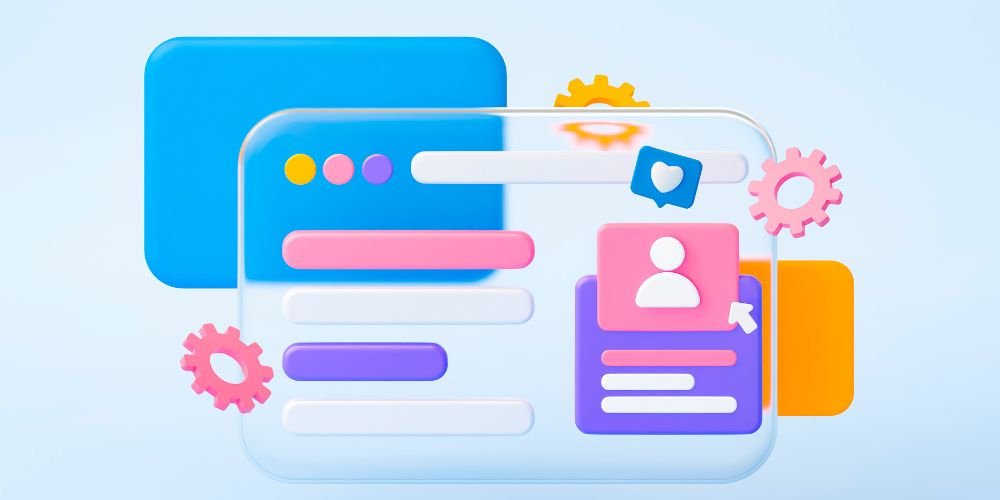In an increasingly digitized world, the user interface (UI) has become the cornerstone of our interactions with technology. From mobile apps to websites and software to smart devices, User Interface design shapes user experiences. The seamless fusion of design aesthetics and functional efficiency creates a user interface that captivates users and enhances their digital journeys.
The Art of Visual Communication
At its core, User Interface design is about visual communication. It’s the language through which technology speaks to users, conveying information, guiding actions, and eliciting emotions. Keyword communication is paramount here. A well-designed UI communicates not just information but also the brand’s identity, tone, and values.
The colors, typography, icons, and layout choices in UI design are deliberate elements that orchestrate a cohesive and immersive experience. Effective UI design transcends aesthetics to establish a visual language that resonates with users, making them feel at home in the digital space.
The User-Centric Approach
A remarkable User Interface is not only visually pleasing but also highly functional. The keyword intuitiveness is pivotal in this context. Users should be able to navigate through interfaces seamlessly, find what they need, and perform tasks effortlessly. A user-centric UI anticipates user needs, streamlining interactions and minimizing cognitive load.
For instance, mobile apps prioritizing frequently used features or websites offering intuitive search bars showcase the value of an intuitive UI. This user-centric approach translates into enhanced user satisfaction and engagement, underscoring the significance of marrying aesthetics with functionality.
The Emotional Impact of UI Design
User Interface design has the power to evoke emotions, forming a deeper connection between users and technology. The keyword emotional resonates here. Subtle design choices, such as color palettes and animations, can elicit feelings of excitement, calmness, or trust.
Consider the warmth of a health app’s soothing color scheme or the playfulness of an educational platform’s animated characters. These emotional cues transcend the realm of design, influencing users’ perceptions and building a lasting rapport between users and the technology they interact with.
Cross-Platform Consistency
Maintaining consistency in User Interface design becomes paramount as technology proliferates across various devices and platforms. The keyword consistency assumes center stage here. Users should be able to seamlessly transition between different interfaces, experiencing a cohesive brand identity and a unified visual language.
Consistency not only streams user experiences but also reinforces brand recognition and trust. Users who encounter a familiar design language across different touchpoints feel a sense of continuity and confidence in the brand’s reliability.
The Evolution of UI Design
User Interface design is not static; it evolves with technology and user preferences. The keyword evolution is pivotal in this discussion. The rise of minimalism, the emphasis on user-centered design, and the integration of AI-driven interfaces are just a few examples of how UI design has adapted to meet changing needs.
Moreover, as devices become more versatile, User Interface design adapts to accommodate various input methods, from touch and voice to gestures and virtual reality interactions. This adaptability showcases the dynamic nature of UI design, which continually strives to create interfaces that align with users’ evolving behaviors and expectations.
Designing for Inclusivity and Diversity
In pursuing captivating designs, it’s essential not to overlook accessibility principles. The keyword accessibility is significant here. A well-designed UI considers the diverse needs of users, including those with disabilities or unique requirements.
Incorporating features like alt text for images, keyboard navigation, and adjustable font sizes ensures all users can access and interact with digital interfaces. By prioritizing accessibility, User Interface designers contribute to a more inclusive digital landscape that caters to everyone, regardless of their abilities.
The Future of UI
User Interface design is poised to expand beyond traditional screens as technology evolves. The rise of the Internet of Things (IoT) and smart devices has introduced new dimensions to UI design. The keyword physical gains prominence here. Interfaces are no longer confined to screens; they extend into the physical world through voice-activated assistants, wearables, and smart appliances.
Designing for these interfaces requires a new level of creativity, as designers must consider how users interact with technology in various contexts and environments. Integrating UI design with physical objects ushers a future where interactions are seamless, intuitive, and harmonious with the surrounding environment.
Conclusion
UI design is the bridge that connects humans with technology, fusing aesthetics, functionality, and emotion into a harmonious whole. The keywords communication, intuitiveness, emotional, and consistency underscore the multifaceted nature of UI design, encapsulating its role in guiding users, evoking emotions, and maintaining brand identity.
As we journey into the digital age, UI design will continue to shape how we interact with technology. From screens to physical objects, UI design will continue to create meaningful, seamless, and impactful digital experiences. Ultimately, the art and science of UI design pave the way for a future where technology becomes an extension of ourselves, enhancing our lives in visually captivating and functionally empowering ways.










